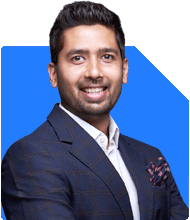Building a 1 Crore Investment Portfolio: From 20,000 Monthly to Homeownership in 5 Years
Ramalingam Kalirajan |10906 Answers |Ask -Follow
Mutual Funds, Financial Planning Expert - Answered on Jan 20, 2025
He has an MBA in finance from the University of Madras and is a certified financial planner.
He is the director and chief financial planner at Holistic Investment, a Chennai-based firm that offers financial planning and wealth management advice.... more

What are the possible investment options for generating an amount of 1 crore in 5 years? Considering I can invest an amount of 20,000 per month.I need to buy a house using that money.
Assessing the Target and Strategy
Generating Rs 1 crore in 5 years requires aggressive investments.
Achieving this amount depends on high returns, consistency, and disciplined investing.
You need to focus on equity-oriented mutual funds for long-term growth.
Investment Options for High Growth
1. Equity Mutual Funds
Equity funds provide high growth potential, essential for your 5-year goal.
Choose Large-Cap Funds for stability and moderate returns.
Include Flexi-Cap Funds for diversified exposure to all market capitalisation.
Allocate to Mid-Cap Funds for higher growth with manageable risk.
Add a small percentage to Small-Cap Funds for aggressive growth opportunities.
2. Balanced Advantage Funds
These funds balance equity and debt investments based on market conditions.
They provide moderate growth with lower volatility compared to pure equity funds.
Suitable for short-term goals with a medium risk tolerance.
3. Systematic Investment Plan (SIP)
Invest Rs 20,000 monthly through SIPs in equity mutual funds.
This approach ensures disciplined investment and market volatility management.
Increase your SIP amount annually by Rs 2000–3000 to boost growth.
Importance of Diversification
Avoid over-reliance on a single type of mutual fund.
Diversify across sectors, market caps, and investment styles.
Regularly review your portfolio with a Certified Financial Planner to ensure alignment.
Tax Efficiency
Equity mutual funds are tax-efficient for your short-term goal.
Long-term capital gains (LTCG) above Rs 1.25 lakh are taxed at 12.5%.
Use tax-saving opportunities like ELSS if they align with your goal.
Avoid Index Funds for This Goal
Index funds replicate the market and may lack active management advantages.
Actively managed funds can outperform and provide better returns.
Key Considerations for Success
1. Monitor and Rebalance
Review your portfolio every 6–12 months.
Rebalance to ensure the asset allocation aligns with your goal.
2. Risk Management
High equity exposure comes with higher risks.
Stick to your plan and avoid panic during market corrections.
3. Maintain Liquidity
Ensure a small emergency fund is set aside for unforeseen needs.
Avoid using your investments for non-critical expenses.
Final Insights
Your goal of Rs 1 crore in 5 years is achievable with disciplined investing. Equity mutual funds, combined with diversification, offer the best route to high growth. Regular reviews with a Certified Financial Planner will ensure your plan stays on track. Focus on consistency and stay committed to the plan.
Best Regards,
K. Ramalingam, MBA, CFP,
Chief Financial Planner,
www.holisticinvestment.in
https://www.youtube.com/@HolisticInvestment
You may like to see similar questions and answers below
Kirtan A Shah | Answer |Ask -Follow
MF Expert, Financial Planner - Answered on Sep 22, 2023
Sanjeev Govila | Answer |Ask -Follow
Financial Planner - Answered on Jan 22, 2024
Ramalingam Kalirajan |10906 Answers |Ask -Follow
Mutual Funds, Financial Planning Expert - Answered on Apr 30, 2024
Ramalingam Kalirajan |10906 Answers |Ask -Follow
Mutual Funds, Financial Planning Expert - Answered on Aug 21, 2024
Ramalingam Kalirajan |10906 Answers |Ask -Follow
Mutual Funds, Financial Planning Expert - Answered on Aug 22, 2024
Ramalingam Kalirajan |10906 Answers |Ask -Follow
Mutual Funds, Financial Planning Expert - Answered on Dec 19, 2025
Nayagam P P |10859 Answers |Ask -Follow
Career Counsellor - Answered on Dec 19, 2025
Ramalingam Kalirajan |10906 Answers |Ask -Follow
Mutual Funds, Financial Planning Expert - Answered on Dec 19, 2025
Ramalingam Kalirajan |10906 Answers |Ask -Follow
Mutual Funds, Financial Planning Expert - Answered on Dec 19, 2025
Ramalingam Kalirajan |10906 Answers |Ask -Follow
Mutual Funds, Financial Planning Expert - Answered on Dec 19, 2025
Radheshyam Zanwar |6751 Answers |Ask -Follow
MHT-CET, IIT-JEE, NEET-UG Expert - Answered on Dec 19, 2025
Radheshyam Zanwar |6751 Answers |Ask -Follow
MHT-CET, IIT-JEE, NEET-UG Expert - Answered on Dec 19, 2025
Samraat Jadhav |2514 Answers |Ask -Follow
Stock Market Expert - Answered on Dec 18, 2025
Reetika Sharma |432 Answers |Ask -Follow
Financial Planner, MF and Insurance Expert - Answered on Dec 18, 2025
Reetika Sharma |432 Answers |Ask -Follow
Financial Planner, MF and Insurance Expert - Answered on Dec 18, 2025

























